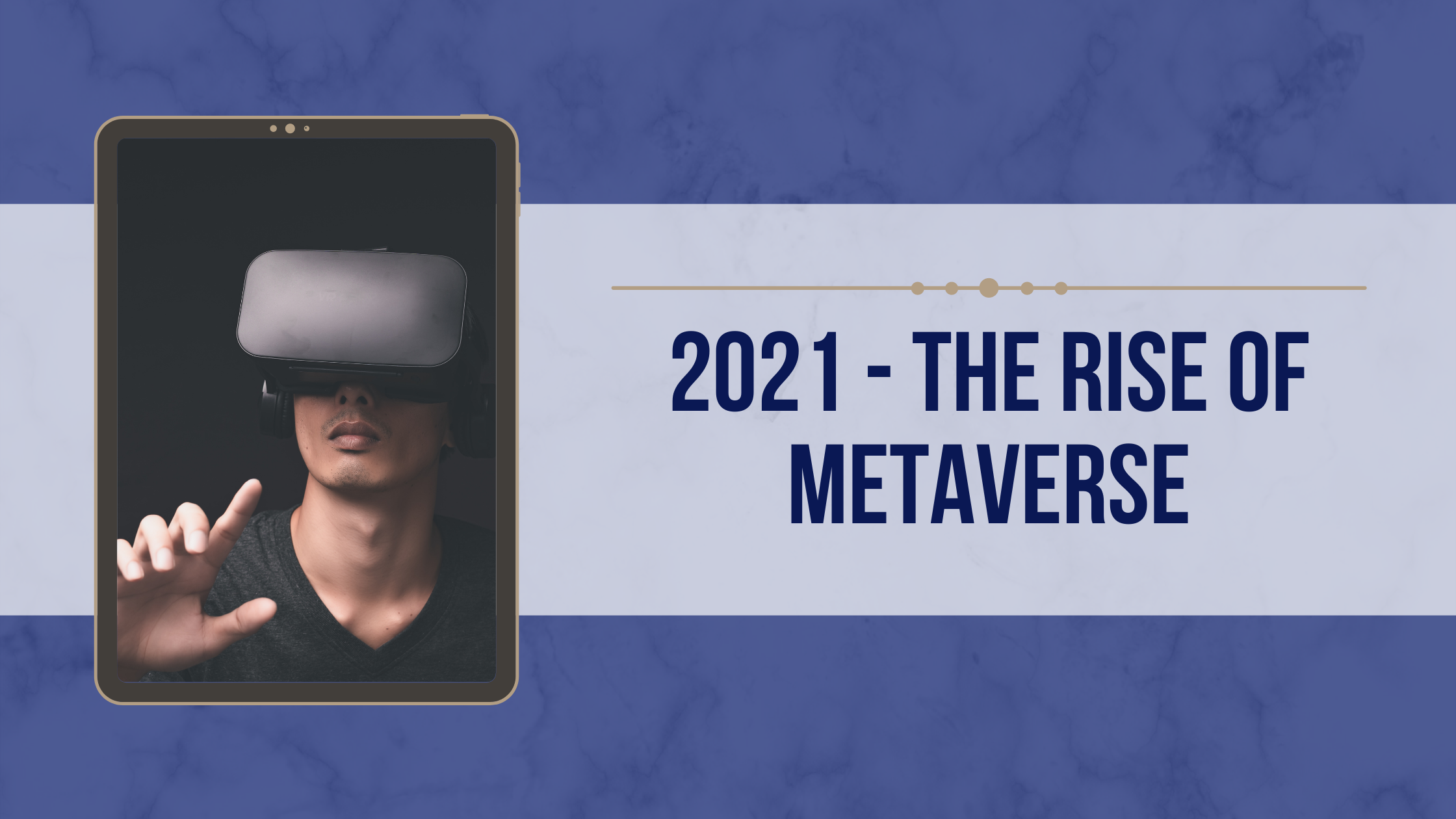2021 - the rise of metaverse
December 2nd 2021, 11:44 pm Author: P.Chau

In a glance, 2021 is coming to an end. After having suffered from the pandemic in 2020, people expected 2021 to be the recovery year. 11 months have passed and we are seeing some good signs, as the technology world has come up with new things, one of which is the metaverse.
What is metaverse and how does it work?
The formerly Facebook-owned tech behemoth has already made significant investments in virtual reality, including the 2014 acquisition of Oculus. Meta envisions a virtual world in which digital avatars interact via VR headsets for work, travel, or entertainment.
The term "metaverse," which originated in science fiction, meaning "beyond," (“meta”) and "universe."
It refers to shared virtual worlds in which land, buildings, avatars, and even names can be purchased and sold, often with cryptocurrency. People can socialize with others in these environments, visit venues, buy products and services, and attend events.
During the pandemic, the concept grew in popularity as lockdown measures and work-from-home policies drove more people online for both business and pleasure.
The term refers to a wide range of virtual realities, including workplace tools, games, and community platforms.
The metaverse considers the big "what if" of combining virtual reality, augmented reality, Zoom meetings, social networks, crypto, NFT's, online shopping, and wearable tech, as well as artificial intelligence, 5G, and other technologies.
Many of the new platforms are powered by blockchain technology, which uses cryptocurrency and non-fungible tokens (NFTs) to enable the creation, ownership, and monetization of a new type of decentralized digital asset.
What is blockchain?
Blockchain = chain of blocks. Just that simple. In the bitcoin whitepaper, Satoshi Nakamoto did not use the word blockchain at all, but clearly wrote "chain of blocks". The reason is because blockchain has no special meaning. Therefore it is not necessary to create a specific term for it. Anything that can be ordered is a blockchain. It is because of this too broad and vague definition that blockchain is everywhere, because obviously, everything is blockchain.
Updating the blockchain is adding a new block. Each block will be able to hold a maximum number of transactions. This limit is from block size. The larger the block size, of course, the more it can hold. Remember the idea of blockchain is that everyone participates in checking that the transaction is valid (check, not create a block), so the larger the block size, the more transactions, the more your laptop will not be able to.
Everyone can participate, but only big players can play. This is the reason to keep the block size low (in exchange for the slow speed) to ensure that everyone can participate in the transaction processing, ensuring there are no invalid transactions.
OK, but how do we update transactions and add new blocks to this chain of blocks? If it's a file in my computer, it's easy, I have the right to copy it. But is this for the whole world?
Suppose the whole world shrunk down to the size of your neighborhood. If the whole neighborhood has an excel file that records ALL transactions of ALL people, it is necessary that everyone has the same copy. So after everyone shares the file, everyone has the same copy, now this blockchain needs to solve 2 problems:
(1) How to update new transactions, who has the right? Apparently the authorized person can modify the transaction history (double spend).
(2) If someone has just moved into the neighborhood, or someone has been away from home for a long time, how can they ensure that the file they receive is the same for everyone? And there are some new residents or people who just return after a while, so they cannot trust anyone in the neighborhood.
Consensus algorithm was born to solve these two problems. You need a fair way to choose who is allowed to add new blocks (1), AND a way for new people to sync data trustlessly (without having to trust anyone) (2).
More metaverse
Another metaverse that is different from that from Facebook is the crypto-based game from Sky Mavis. Axie Infinity, built on the Ethereum blockchain, is a battling game inspired by the old-school Japanese video game Pokémon and the Tamagotchi digital pets. Players can create, raise, trade, and battle with non-fungible tokens known as "Axies" (NFTs). Axies can be constructed from over 500 different body parts. They can breed with other Axies up to seven times to produce offspring that can be sold on the gaming platform.
Axie Infinity Shards are the Axie Infinity platform's governing token. Tokens can be obtained in a variety of ways, including breeding Axies, competing in matches, and winning tournaments. AXS tokens also grant players the ability to vote on how funds in the community treasury are spent. They can also be staked to claim rewards. This cryptocurrency has skyrocketed more than 29,700 percent in the last year.



